Please write this in java using a GUI Implement a class call
Solution
public class Node<V>
{
// instance variables
private V element;
private Node<V> next;
public Node()
{
this (null, null);
}
public Node(V element, Node<V> next)
{
this.element = element;
this.next = next;
}
// set/get methods
public V getElement()
{
return element;
}
public Node<V> getNext()
{
return next;
}
public void setElement(V element)
{
this.element = element;
}
public void setNext(Node<V> next)
{
this.next = next;
}
}
public class SLinkedList<V>
{
// instance variables. Add the tail reference.
protected Node<V> head, tail;
protected long size;
// methods, empty list constructor first
public SLinkedList ()
{
head = null;
tail = null;
size = 0;
}
// method to add nodes to the list.
public void addFirst (Node<V> node)
{
// set the tail only if this is the very first node
if (tail == null)
tail = node;
node.setNext (head); // make next of the new node refer to the head
head = node; // give head a new value
size++;
}
// addAfter - add new node after current node, checking to see if we are at the tail
public void addAfter (Node<V>currentNode, Node<V>newNode)
{
if (currentNode == tail)
tail = newNode;
newNode.setNext (currentNode.getNext ());
currentNode.setNext (newNode);
size++;
}
// addLast - add new node after the tail node.
public void addLast (Node<V> node)
{
node.setNext (null);
tail.setNext (node);
tail = node;
size++;
}
// methods to remove nodes from the list.
public Node<V> removeFirst ()
{
if (head == null)
System.err.println(\"Error: List is empty\");
// save the one to return
Node<V> temp = head;
// do reference manipulation
head = head.getNext ();
temp.setNext(null);
size--;
return temp;
}
public Node<V> removeLast ()
{
// // declare local variables/objects
Node<V> nodeBefore;
Node<V> nodeToRemove;
// make sure we have something to remove
if (size == 0)
System.err.println(\"Error: Attempt to remove fron an empty list\");
// traverse through the list, getting a reference to the node before
// the trailer. Since there is no previous reference.
nodeBefore = getFirst ();
// potential error ?? See an analysis and drawing that indicates the number of iterations
// 9/21/10. size - 2 to account for the head and tail nodes. We want to refer to the one before the
// tail.
for (int count = 0; count < size - 2; count++)
nodeBefore = nodeBefore.getNext ();
// save the last node
nodeToRemove = tail;
// now, do the pointer manipulation
nodeBefore.setNext (null);
tail = nodeBefore;
size--;
return nodeToRemove;
}
// method remove. Remove a known node from the list.
public void remove (Node<V> nodeToRemove)
{
// declare local variables/references
Node<V> nodeBefore, currentNode;
// make sure we have something to remove
if (size == 0)
System.err.println(\"Error: Attempt to remove fron an empty list\");
// starting at the beginning check for removal
currentNode = getFirst ();
if (currentNode == nodeToRemove)
removeFirst();
currentNode = getLast ();
if (currentNode == nodeToRemove)
removeLast();
// we\'ve already check two nodes, check the rest
if (size - 2 > 0) {
nodeBefore = getFirst ();
currentNode = getFirst ().getNext ();
for (int count = 0; count < size - 2; count++) {
if (currentNode == nodeToRemove) {
// remove current node
nodeBefore.setNext (currentNode.getNext ());
size--;
break;
}
// change references
nodeBefore = currentNode;
currentNode = currentNode.getNext ();
}
}
}
// the gets to return the head and/or tail nodes and size of the list
public Node<V> getFirst () { return head; }
public Node<V> getLast () { return tail; }
public long getSize () { return size; }
}
public class GameScores
{
protected String name; // name of the person earning this score
protected int score; // the score value
/** Constructor to create a game entry */
public GameScores(String name, int score)
{
this.name = name;
this.score = score;
}
/** Retrieves the name field */
public String getName()
{
return name;
}
/** Retrieves the score field */
public int getScore()
{
return score;
}
/** Returns a string representation of this entry */
public String toString()
{
return \"(\" + name + \", \" + score + \")\";
}
}
public class GameScores
{
protected String name; // name of the person earning this score
protected int score; // the score value
/** Constructor to create a game entry */
public GameScores(String name, int score)
{
this.name = name;
this.score = score;
}
/** Retrieves the name field */
public String getName()
{
return name;
}
/** Retrieves the score field */
public int getScore()
{
return score;
}
/** Returns a string representation of this entry */
public String toString()
{
return \"(\" + name + \", \" + score + \")\";
}
}
public class GameTester
{
public static void main(String[] args)
{
GameScores entry;
entry = new GameScores(\"Anna\", 600);
entry = new GameScores(\"Paul\", 720);
System.out.println(\"TOP GAME SCORES\");
}
}
public class Scores
{
//add function
public SLinkedList<GameScores> add(GameScores rank, SLinkedList<GameScores> scores)
{
Node<GameScores> currentNode = scores.getFirst();
Node<GameScores> nextNode = null;
Node<GameScores> previousNode = null;
Node<GameScores> newNode = new Node<GameScores>();
newNode.setElement(rank);
if(scores.getSize() == 0)
{
scores.addFirst(newNode);
}
else
{
while(currentNode != null)
{
nextNode = currentNode.getNext();
if(nextNode == null)
{
scores.addLast(newNode);
}
else
{
scores.addAfter(currentNode, newNode);
break;
}
previousNode = currentNode;
currentNode = currentNode.getNext();
}
}
return scores;
}
//remove function
public void remove(int i)
{
}
public void print(SLinkedList<GameScores> scores)
{
Node<GameScores> currentNode = scores.getFirst();
GameScores currentEntry = currentNode.getElement();
System.out.printf(\"[\");
for(int i = 0; i < scores.getSize(); i++)
{
System.out.printf(\", %s\", currentEntry.toString());
currentNode = currentNode.getNext();
currentEntry = currentNode.getElement();
}
System.out.println(\"]\");
}
}
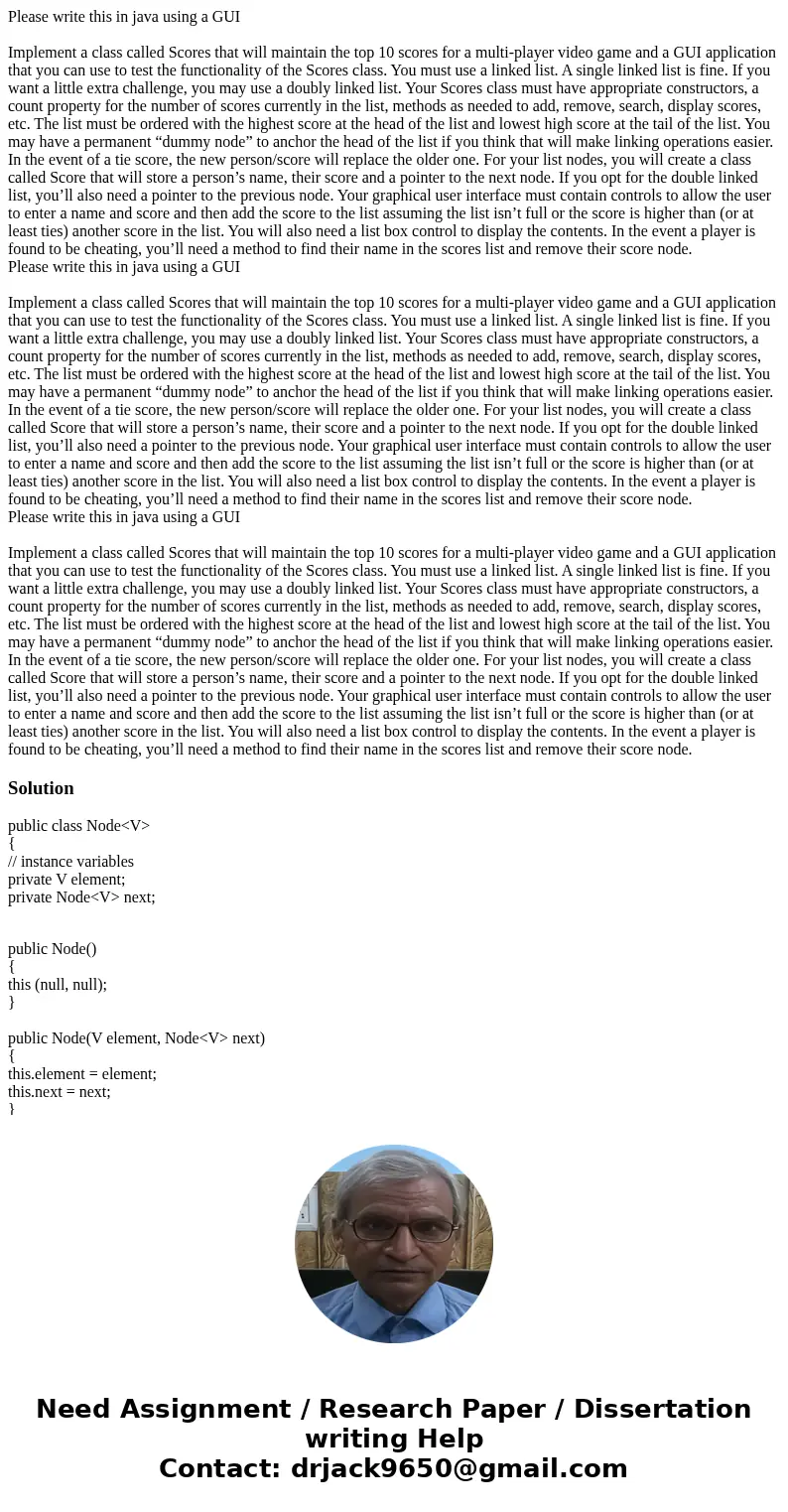
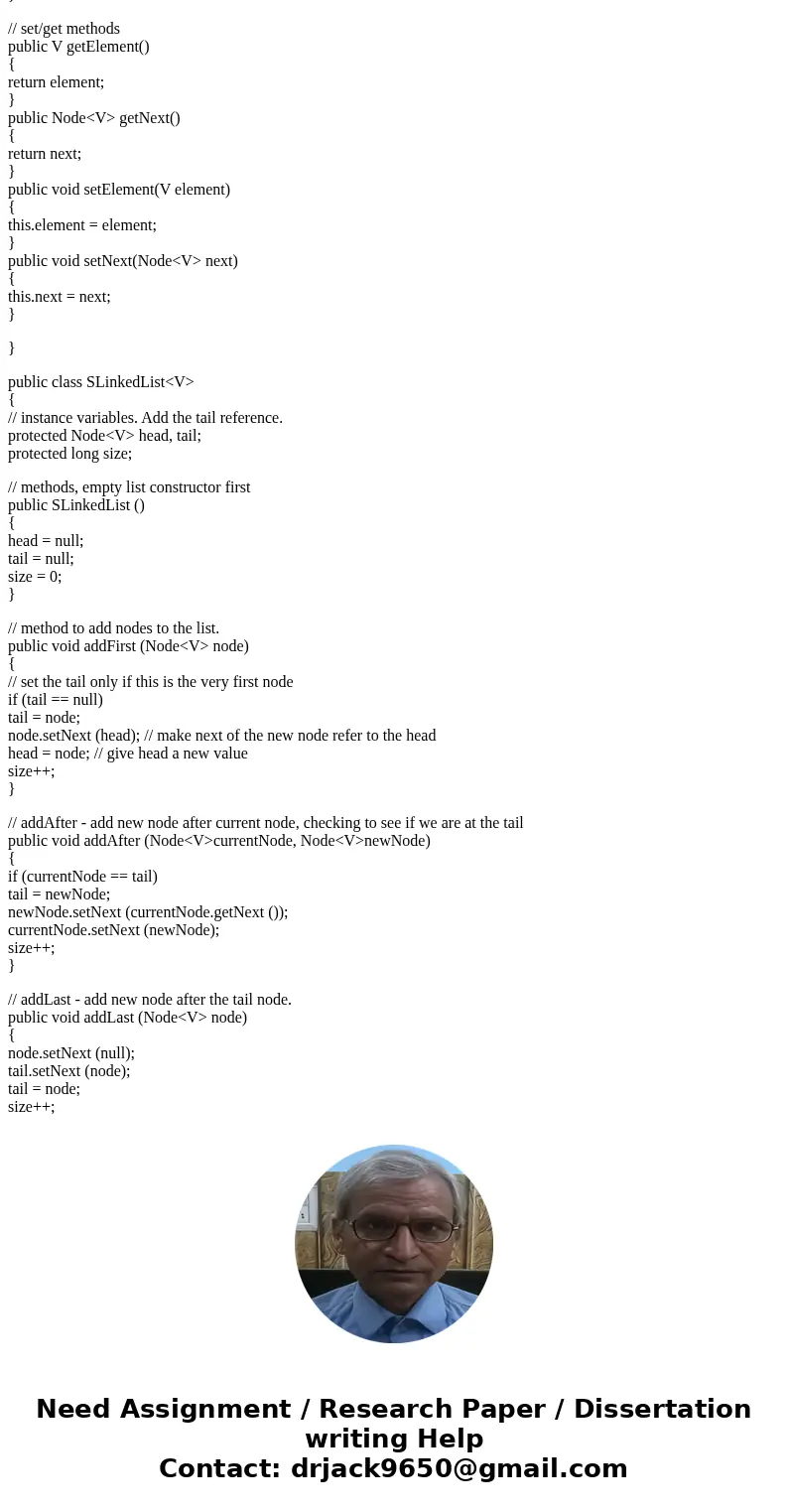
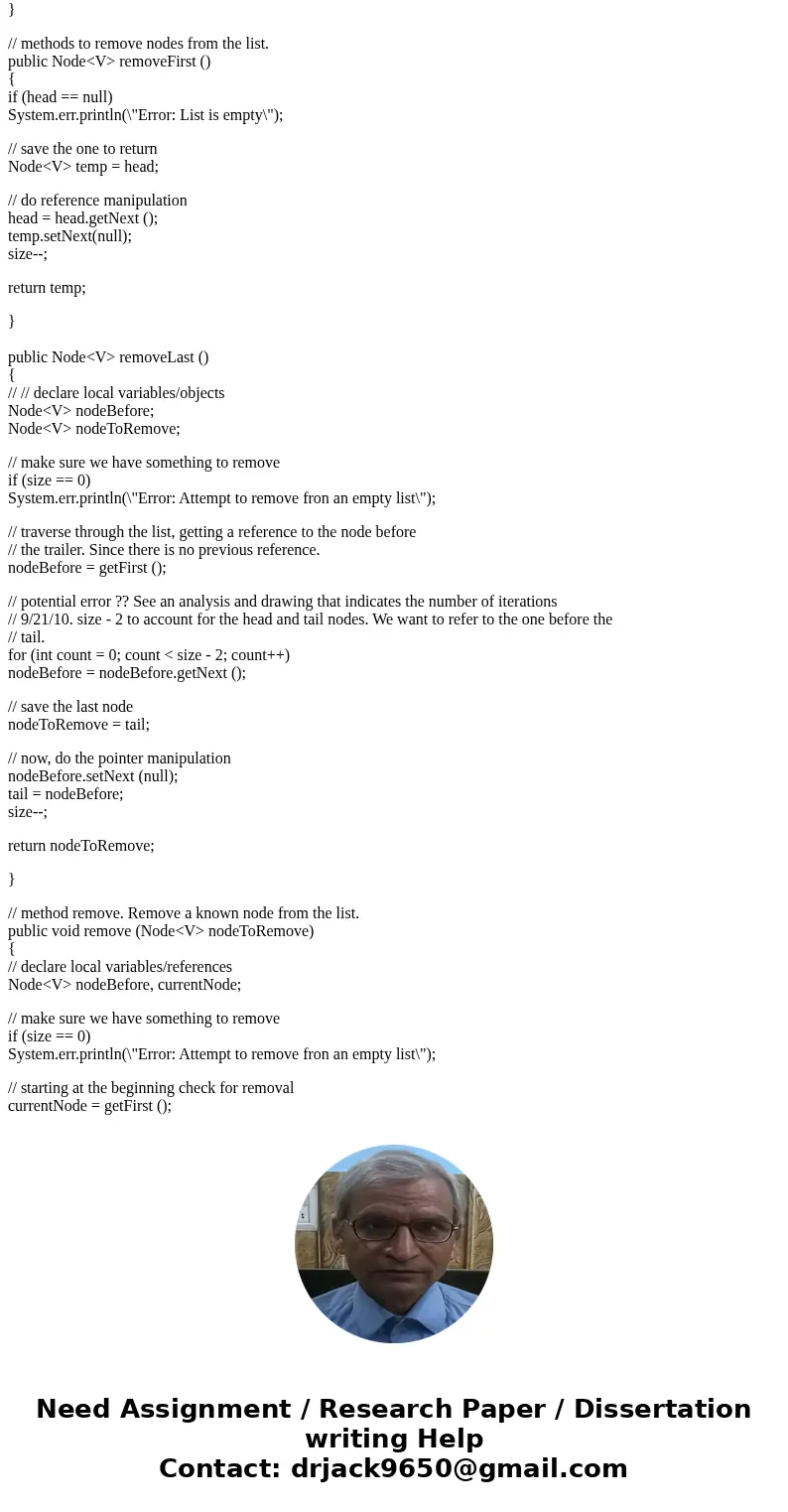
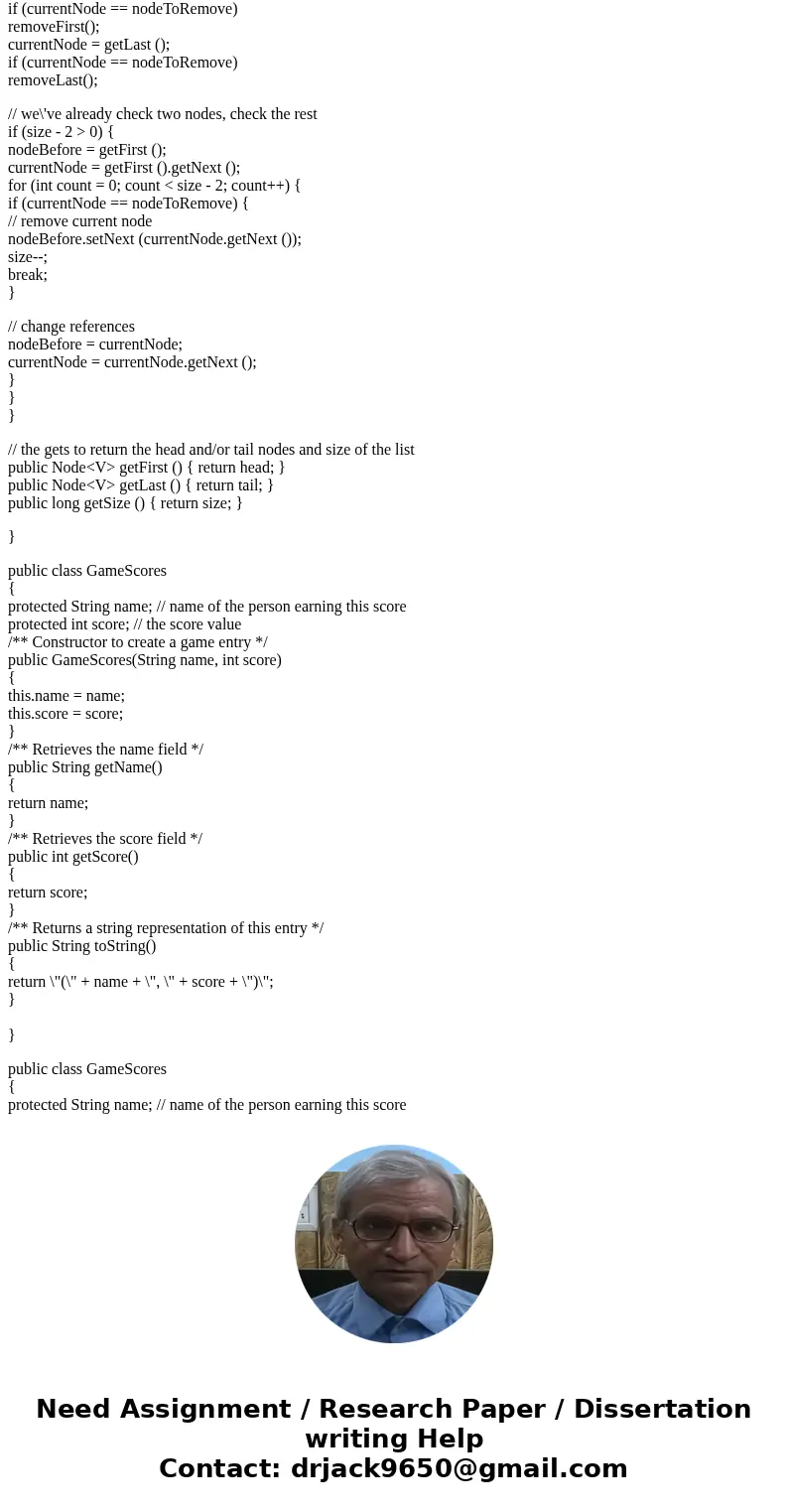
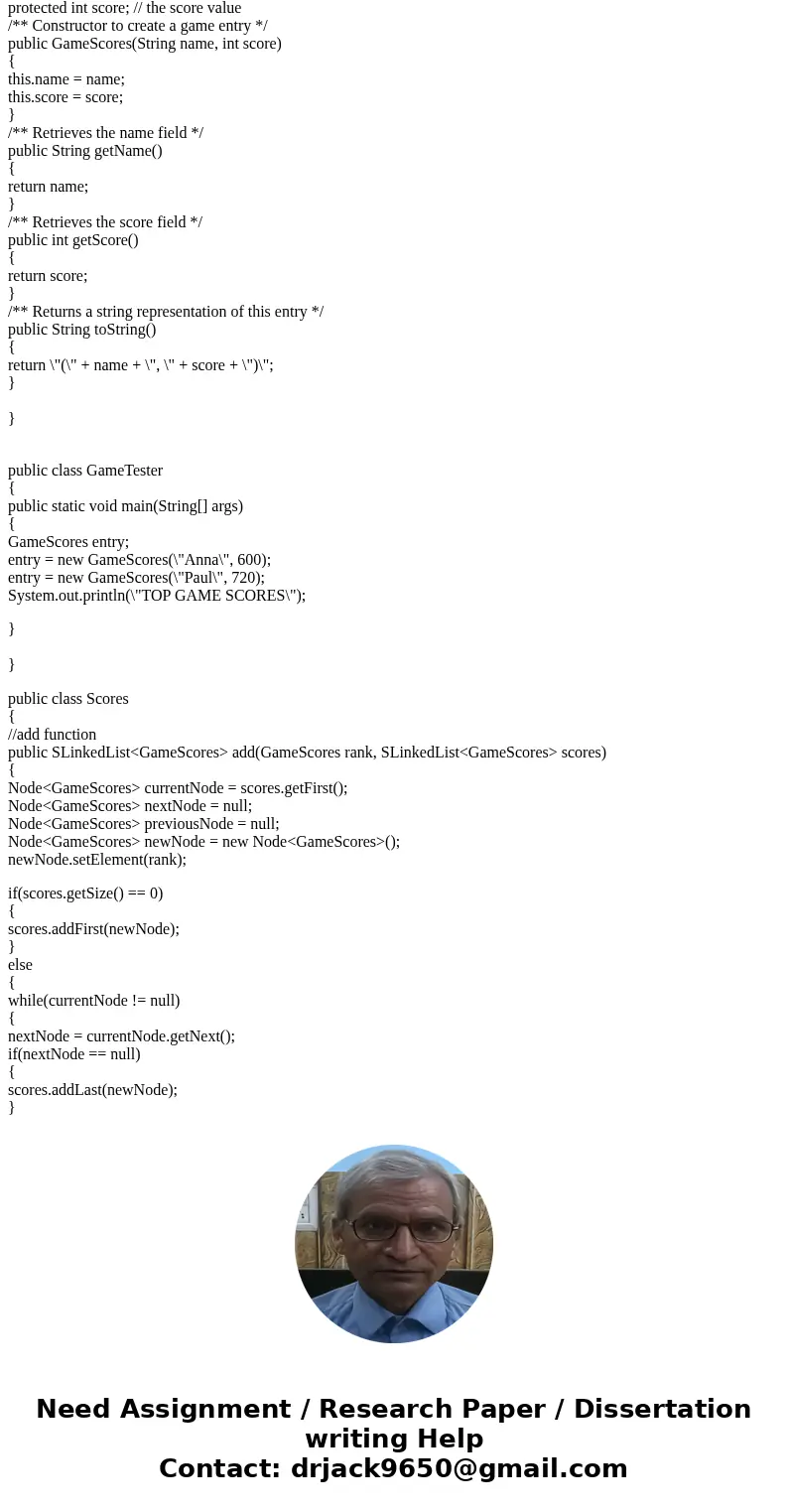
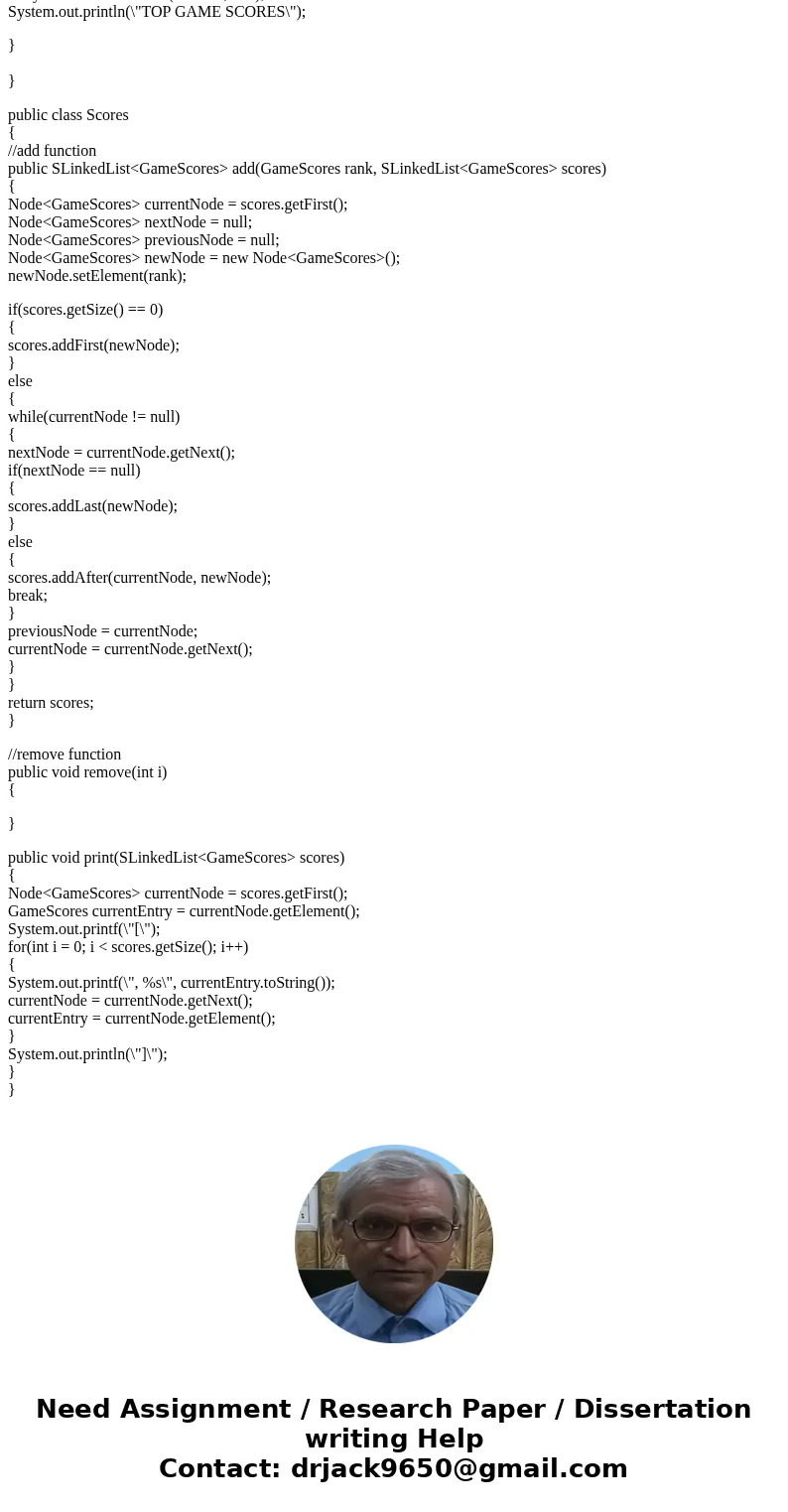
 Homework Sourse
Homework Sourse